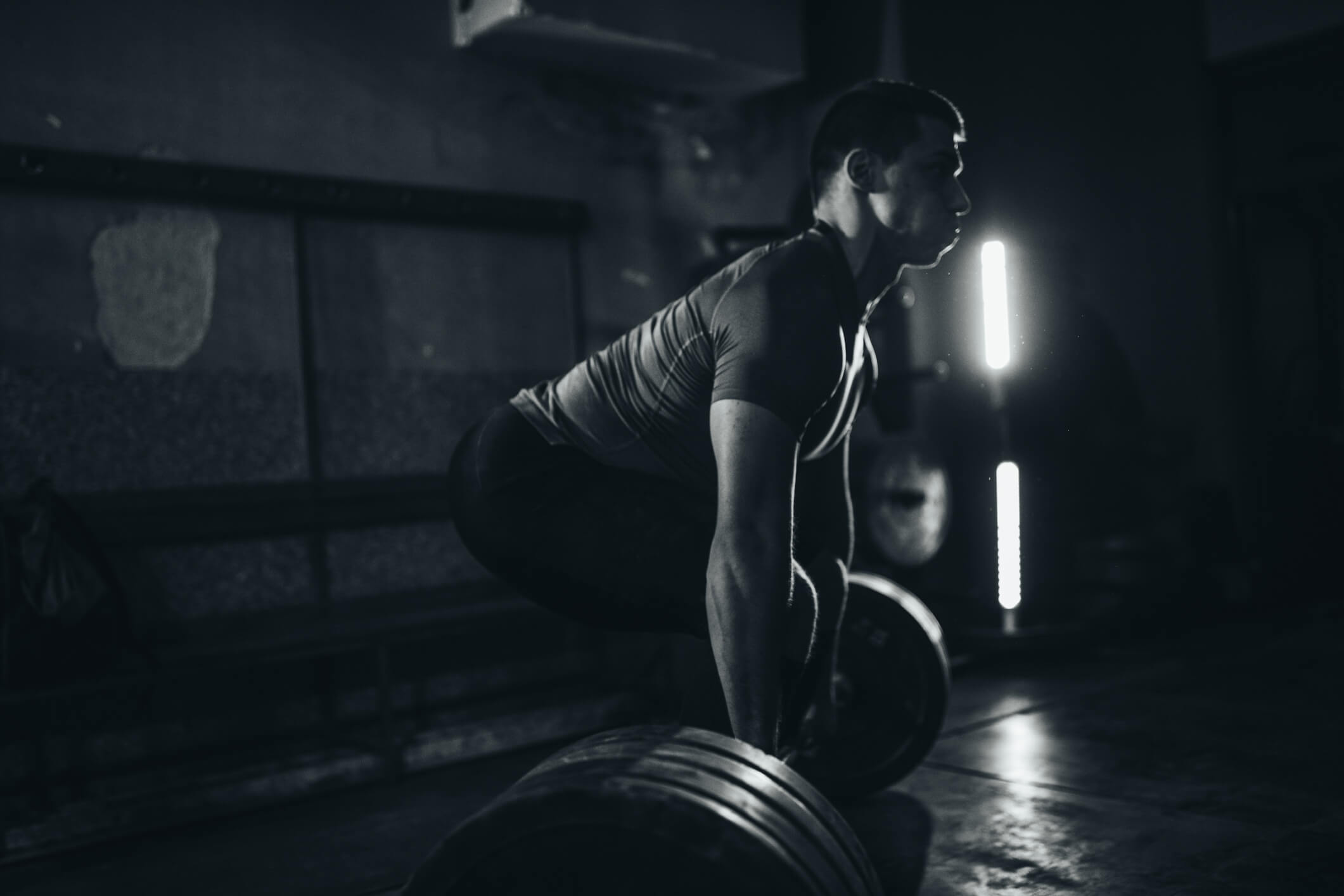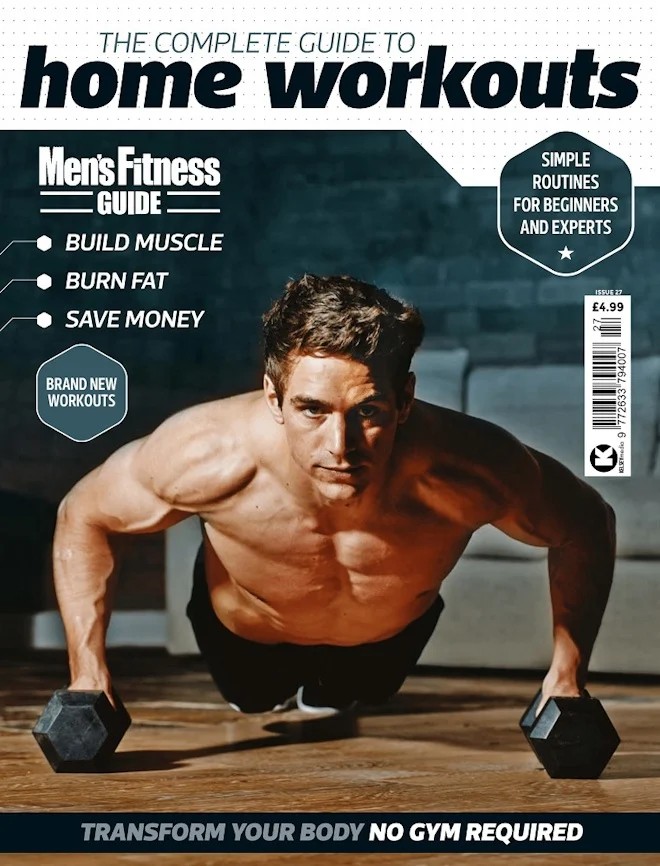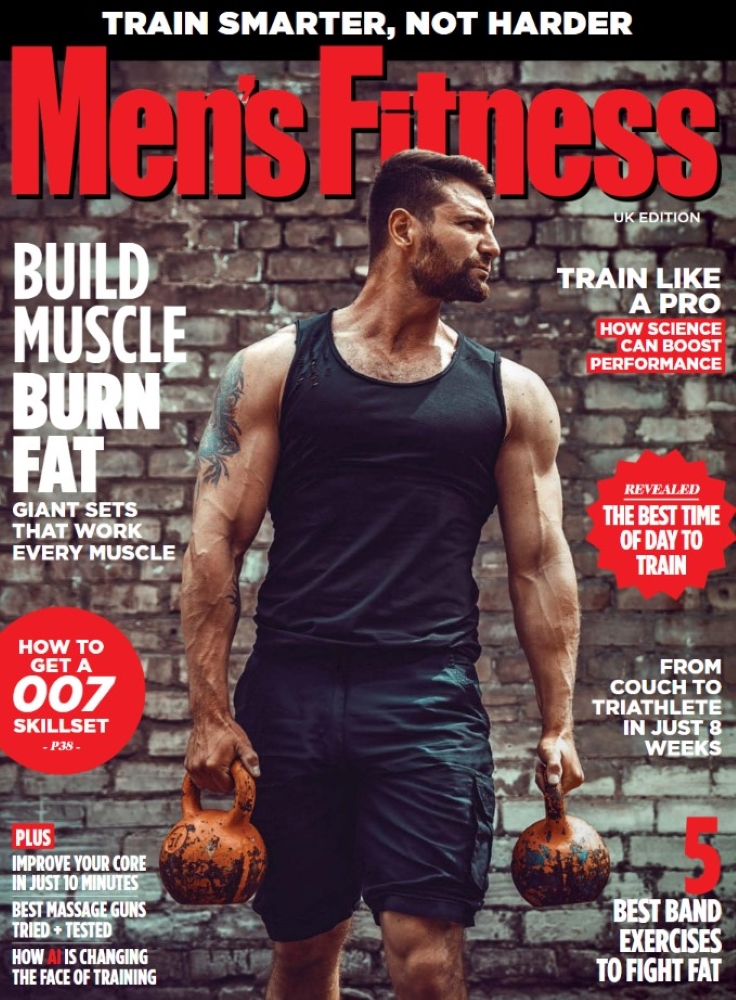Combine two exercises into one movement to maximise muscle activation and fast-track fat loss every time you hit the gym, writes PT Steve Hoyles.
The concept of complexes is actually fairly simple: you combine two or more movements into a single exercise, doubling the benefit in half the time.
The movement can use the same muscle or a combination of muscles, depending on your training goals.
This approach takes the volume and intensity of the superset method from bodybuilding and combines it with a movement-based approach often seen in weightlifting and functional fitness programmes.
Thanks to the huge amount of muscle trained in a single session, it ties in with recent research that shows frequency of muscle stimulation may be mor effective for growth and hypertrophy than the once-a-week split style of training.
While it’s not a complete departure from bodybuilding methods, it does take your training in a different direction.
Think of it as an evolution of effective methods: taking a superset approach that we know works and combining the movements within a single exercise.
Less risk, more balance
One of the problems gym-goers often experience is that their strength training isn’t balanced properly. They inadvertently repeat the same movement patterns over and over again, which causes or exaggerates existing injuries.
If your workout looks like a combination of bench press, curls, overhead press and more curls, you’re essentially storing up shoulder problems for the near future.
Likewise, if you batter your abs without more focus on rotation, lower back strength work and flexibility, chances are you’ll be welcoming back and hip problems very soon.
By training with complexes, you don’t over-rely on movement patterns within a workout; instead you balance your training, reduce your injury risk and enjoy better results overall.
You’ll reap the ‘new challenge’ rewards: you’re not used to this style of training, so the workouts will push you harder and the training effect will increase.
Like any workout, you can manipulate all of the standard variables here. The weights you use, the sets, the reps and the rest periods are all adjustable to help you achieve your fitness goals.
This training approach works equally well if you use higher reps for an intense volume session, or heavier weights with fewer reps to build serious strength.
Lower-Body Complex Workout
1a. Dumbbell Squat into Alternating Lunge
- Perform a deep dumbbell squat, followed by a forward lunge on each leg.
1b. Back Squat into Calf Raise
- With the barbell on your back, drop into a deep squat.
- When you’ve returned to the top of the squat, stand on your tip toes, performing a calf raise.
1c. Deadlift into Shrug
- Keep your back straight and core braced.
- Drive through the feet and push your hips forward to life the bar.
- When in this position at the top of the deadlift, keep your arms straight and shrug your shoulders, pulling the barbell up until your traps are by your ears.
- Return with control.
1d. Sumo Deadlift High Pull
- Keep your feet wide, with hands close together, gripping the middle of the bar.
- Keep your back straight and chest up.
- Drive through your legs, pulling the bar up.
- Once the bar reaches hip height, pull the bar to your chest, keeping elbows high.
1e. Stiff-Legged Deadlift into Bent-Over Row
- Keep your legs and back straight, and hold the bar slightly wider than shoulder-width.
- Push your hips forward and keep your chest up, pulling the bar up as you do.
- On the way back to the start position, pause at the halfway point and perform a bent-over row, pulling the bar into your chest and lowering it back down, before completing the deadlift movement.










